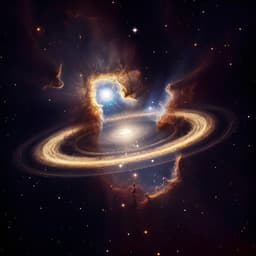
Physics
First emergence of cold accretion and supermassive star formation in the early universe
M. Kiyuna, T. Hosokawa, et al.
This groundbreaking research by Masaki Kiyuna, Takashi Hosokawa, and Sunmyon Chon delves into the early universe’s cold accretion phenomenon. Using advanced simulations, they reveal vital insights into halo formations and the conditions fostering supermassive star formation, making this study essential for understanding cosmic evolution.
~3 min • Beginner • English
Related Publications
Explore these studies to deepen your understanding of the subject.







